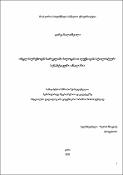Options
The analysis of some stylistic and semantic features of English advertising slogans
Date Issued
2020
Author(s)
Advisor(s)
Institution
Abstract
Modern life, saturated with the latest technologies in mass media, is unimaginable without ads, which has the greatest impact on our daily lives. No matter what techniques and strategies the advertiser possesses, the main carriers of information are still the language structures. The paper presents the study-analysis of the linguistic characteristics of English-language advertising in the lexical and stylistic level.
In order to achieve a high business effect in the face of such competitive advertising messages, marketers always use different linguistic means to gain the attention of the customers, to arouse their desire for the product and to control their action. The paper analyzes the lexical material of advertising from the following linguistic aspects: using homophones, adjectives, interrogative sentences, person pronouns, neologisms and compound words.
The novelty of the paper is that the stylistic semantic structure of advertising slogans has not yet been thoroughly studied in the Georgian linguistic space. The paper provides an important stylistic and semantic analysis, which was previously incompletely presented in Georgian. It will be of great help to both language specialists and advertisers to know exactly what stylistic techniques and lexical material to use to attract costumers. The paper is also important for the costumers to be able to control their own activity in the face of numerous advertising.
In order to achieve a high business effect in the face of such competitive advertising messages, marketers always use different linguistic means to gain the attention of the customers, to arouse their desire for the product and to control their action. The paper analyzes the lexical material of advertising from the following linguistic aspects: using homophones, adjectives, interrogative sentences, person pronouns, neologisms and compound words.
The novelty of the paper is that the stylistic semantic structure of advertising slogans has not yet been thoroughly studied in the Georgian linguistic space. The paper provides an important stylistic and semantic analysis, which was previously incompletely presented in Georgian. It will be of great help to both language specialists and advertisers to know exactly what stylistic techniques and lexical material to use to attract costumers. The paper is also important for the costumers to be able to control their own activity in the face of numerous advertising.
Degree Name
ინგლისური ფილოლოგიის მაგისტრი
Degree Discipline
ანგლისტიკის სამაგისტრო საგანმანათლებლო პროგრამა
File(s)
Loading...
Name
Darka Baliashvili Samagistro.pdf
Description
ინგლისურენოვან სარეკლამო სლოგანთა ლექსიკის სტილისტურ-სემანტიკური ანალიზი
Size
676.22 KB
Format
Adobe PDF
Checksum
(MD5):833c11536b99aeb63c4529f1b5a3c9b8